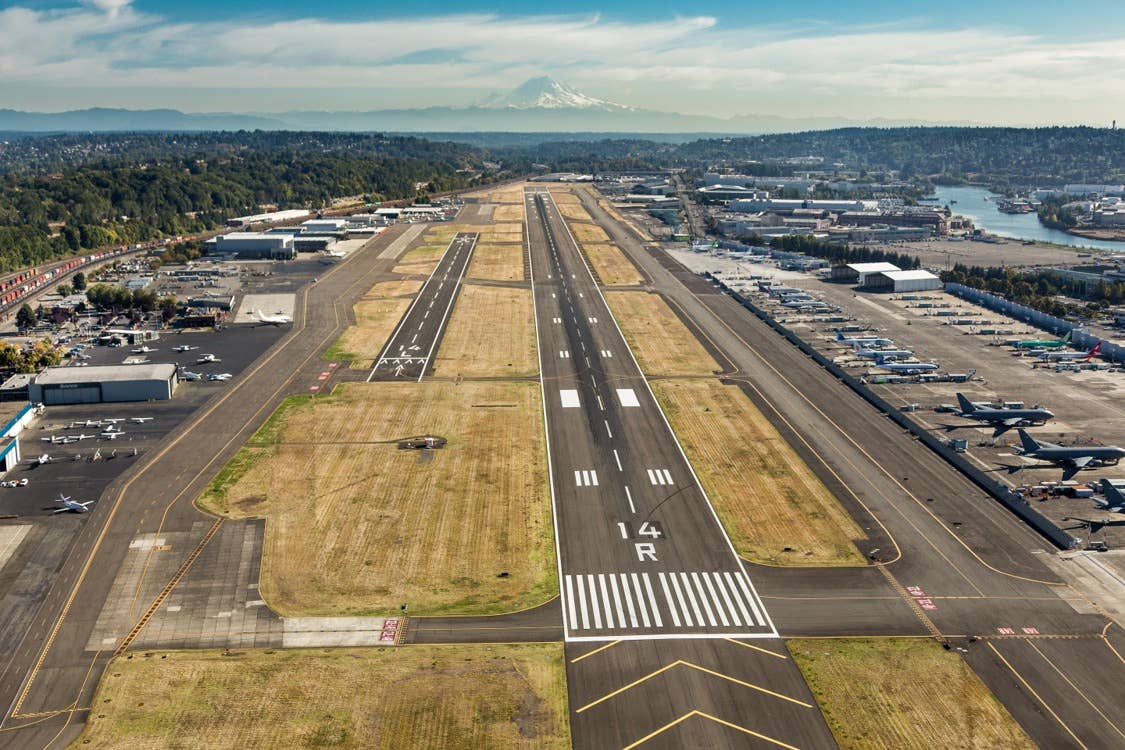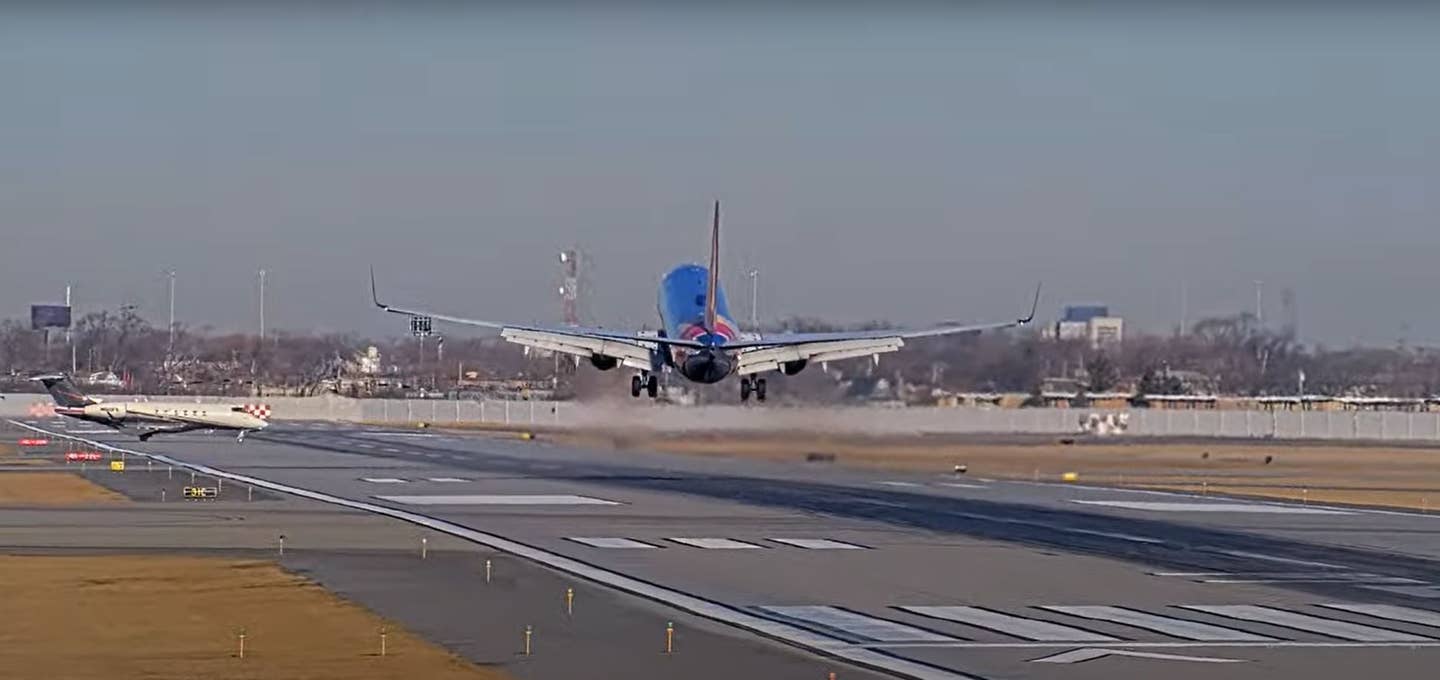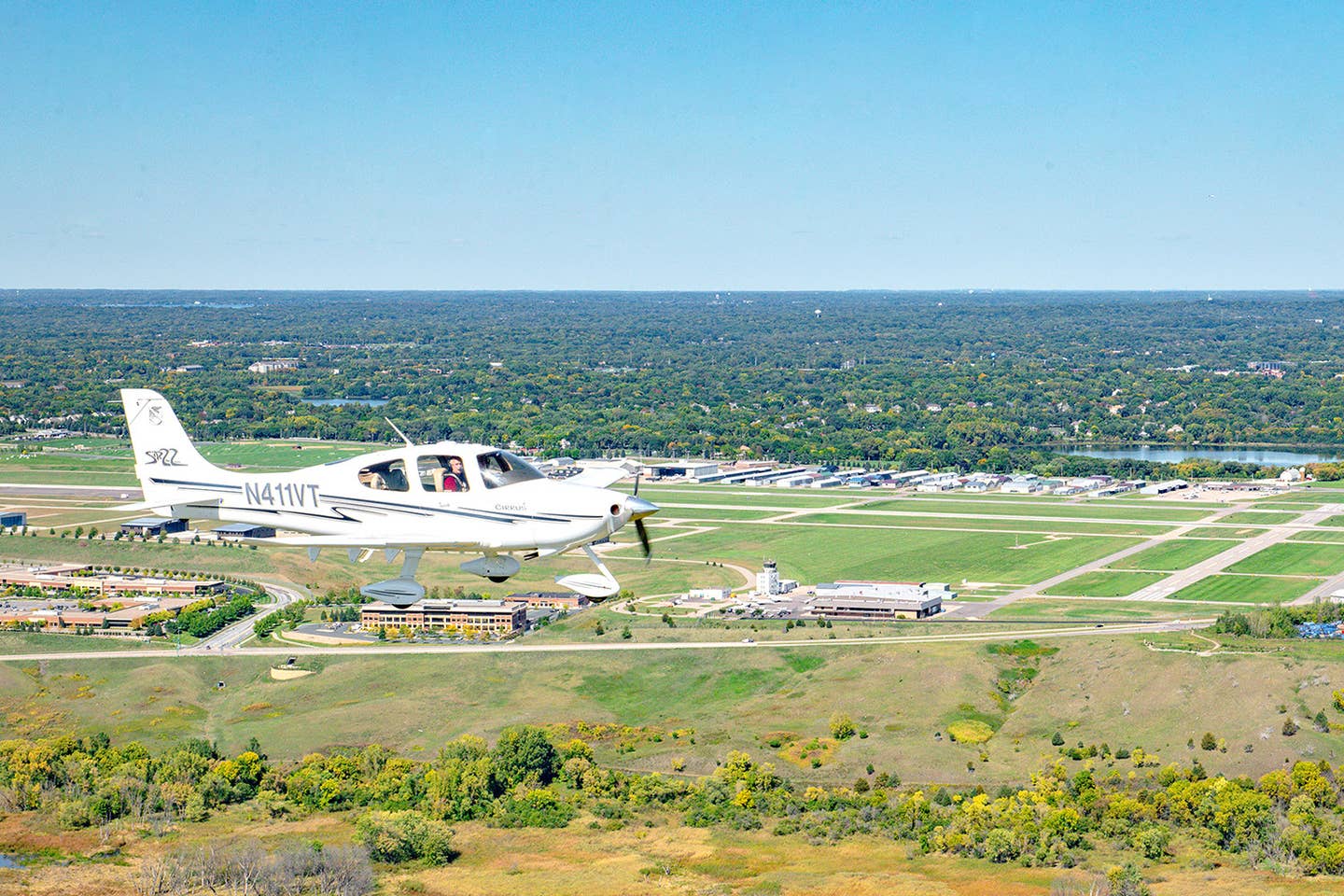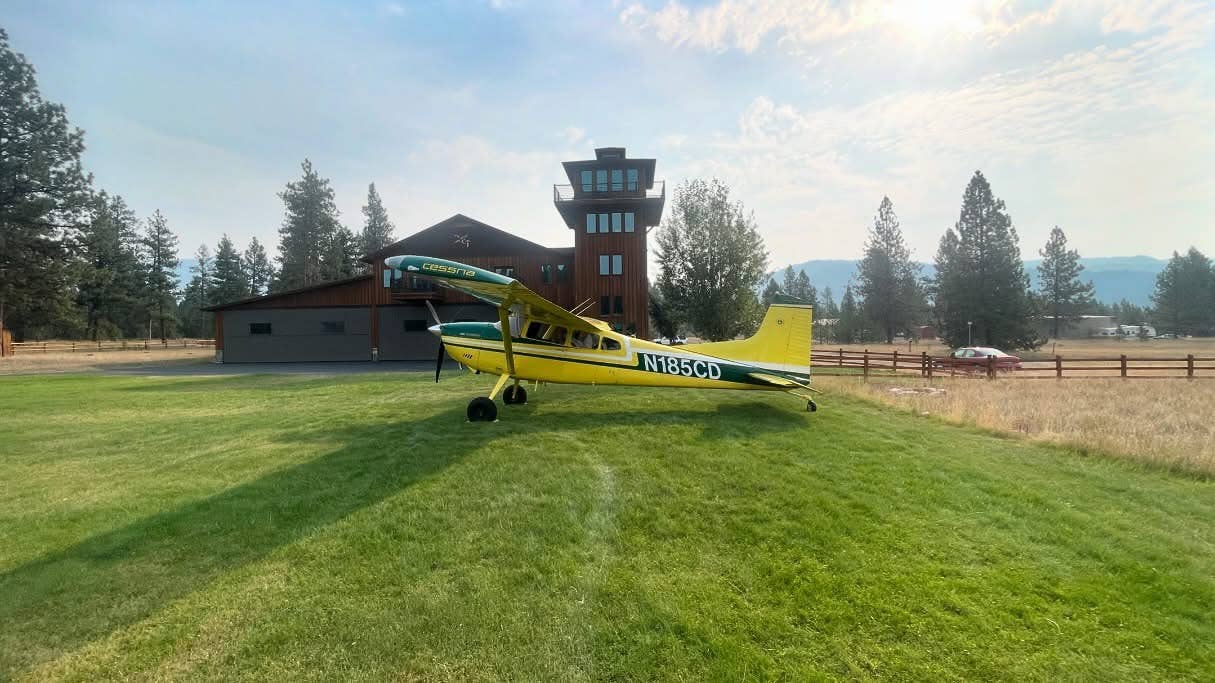Hangar Shortage Spurs 2 GA Pilots to Launch Development Project
The Planecave venture will begin construction on 18 new hangars at Columbia Gorge Regional Airport in August.
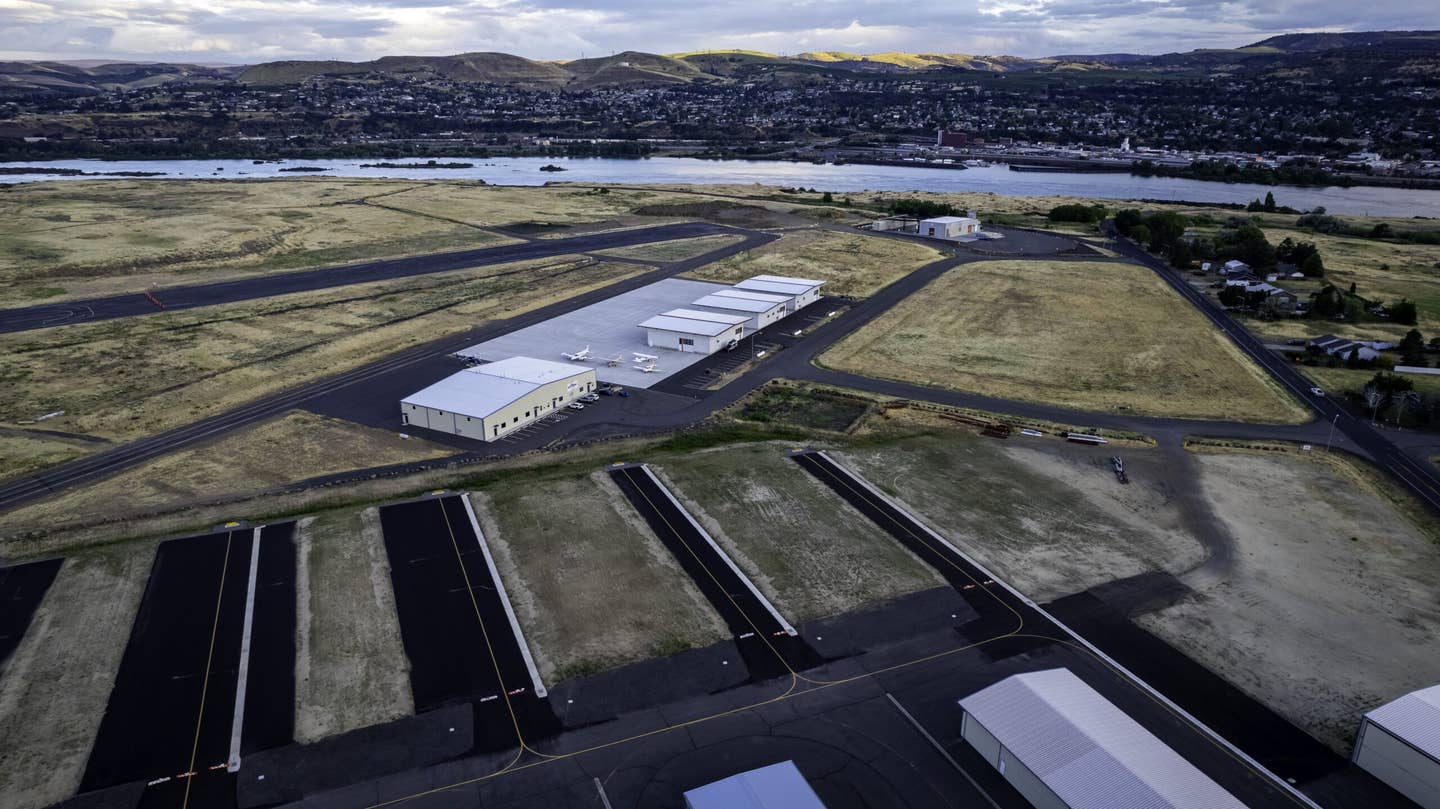
Aerial view of Columbia Gorge Regional Airport, which is adjacent to the Columbia River on the Washington-Oregon border. [Courtesy: Planecave]
A number of factors led pilots Thomas Richter and Steve Jordan to make the leap into aviation real estate. Their hangar development project, the first they hope of many, is at Columbia Gorge Regional Airport (KDLS) in The Dalles, Oregon.
Richter joined forces with longtime friend and business partner Jordan to create their Planecave venture. The two met more than 25 years ago when they were both working behind the camera in Hollywood. Since then, they each had their own successful entrepreneurial careers.
Jordan’s foray into a novel business venture ultimately led to inspiration for the airplane hangar development firm.
“Steve had gone off to Hawaii to start a shark diving business,” Richter said. “It was sort of a fledgling tourist operation that he resurrected and was very successful with. He sold it two years ago and was traveling the country. When he went to Alaska, he fell in love with backcountry flying and immediately bought a plane.”
Jordan began initial flight training at the north central Oregon airport. Only a week after receiving his private pilot’s license, he joined Richter on a trip around the country.
“That was really the beginning of Planecave, because we started talking about how difficult it is to find hangars up where he is [on the Oregon-Washington border] and down here as well [in Los Angeles]," Richter said. "Steve said, ‘If you want to look at this and develop this, let’s talk about it because we have a long waitlist at every airport around here. And no one is building hangars.’”
The duo decided to tackle the apparent nationwide hangar shortage, starting with KDLS first.
“Steve knew the airport manager and had learned about the waitlist, and that the airport has space to build hangars—but didn’t have the funds to do so,” Richter said. “[It was] the same problem we discovered at many airports all across the nation and it became clear to us why that problem exists.”
The pair’s plan to tackle the hangar shortage at the airport is different from how others have solved the problem elsewhere, according to Richter. They believe that aviation infrastructure is prime for outside investment.
“What we’ve come up with is an innovative, newer approach, where we don’t just look at one property necessarily,” he said. “But we look and say, ‘How do we create a product that we can sell to someone who wants to have a return and wants to have very little to do with the investment?’ It’s what we call in the real estate world a triple net investor, and I have some of these types of investments for that very reason. You don’t have to deal with the property very much and essentially just buy the value of the lease.”
The two rows of hangars have been approved by the airport and the ground lease is awaiting final sanctioning by city and county authorities. Construction is expected to begin in late August, with a targeted completion date in October.
“There is potentially a 40-year ground lease for this development—20 years plus two 10-year options," Richter said. "There is very high demand, very low supply, and very low [expected] vacancy based on that. And it’s a business that’s very difficult to disrupt. No one is going to come up with some new digital technology that’s going to disrupt how you park your airplane. All of those things pointed in the right direction, and it seemed like this idea could have legs on that basis.”
Roughly 35 pilots were on the waitlist at the airport, with 18 new hangars planned to be created. Each nested T-hangar will be 42 feet wide with a 12-foot-tall door (four of the hangars will be slightly larger).
Richter said that reception from aviators in the area has been positive, despite the limited marketing from the Planecave team to date. Interest has also come from outside the aviation community, including traditional investors looking to learn more about this niche of real estate.
“Right now, we’re intending to, unless we find a single investor who wants to finance the entire project, syndicate the project to several parties,” he said. “There are networks that exist [to attract real estate investors], but this is a unique and new product that people are not familiar with. So, it takes a little bit more education on our part, and we really have to educate investors on why we think this is a good investment. I’ve talked to a whole bunch of them and most seem to immediately get it.
“I tend to say, lLook, it’s like self-storage on steroids. People don’t give up their self-storage facility once they have it, and people definitely don’t give up their hangar once they have it. That makes a really good pitch to investors, and they see the opportunity, the high demand and low supply. They see the value in the 40 years of steadily increasing revenue with low vacancy.”
The Planecave team’s goal is to initially satisfy the demand for hangar space at Columbia Gorge Regional, with its sights set on pursuing additional projects in the future.
“Everyone else seems to be concentrating on one airport, right?” Richter said. “It may be the guy who needs a hangar but can’t get one and decides to start a project. We think there is a real opportunity to repeat this over and over again. To serve the market at other airports and keep going. The feedback we are getting seems to support that.
“Hangar projects are an attractive investment property for investors that want to come in and buy a finished product that is stabilized with tenants, and that has a good outlook into the future in terms of the lease lengths, rents, and vacancies.”

Sign-up for newsletters & special offers!
Get the latest FLYING stories & special offers delivered directly to your inbox

